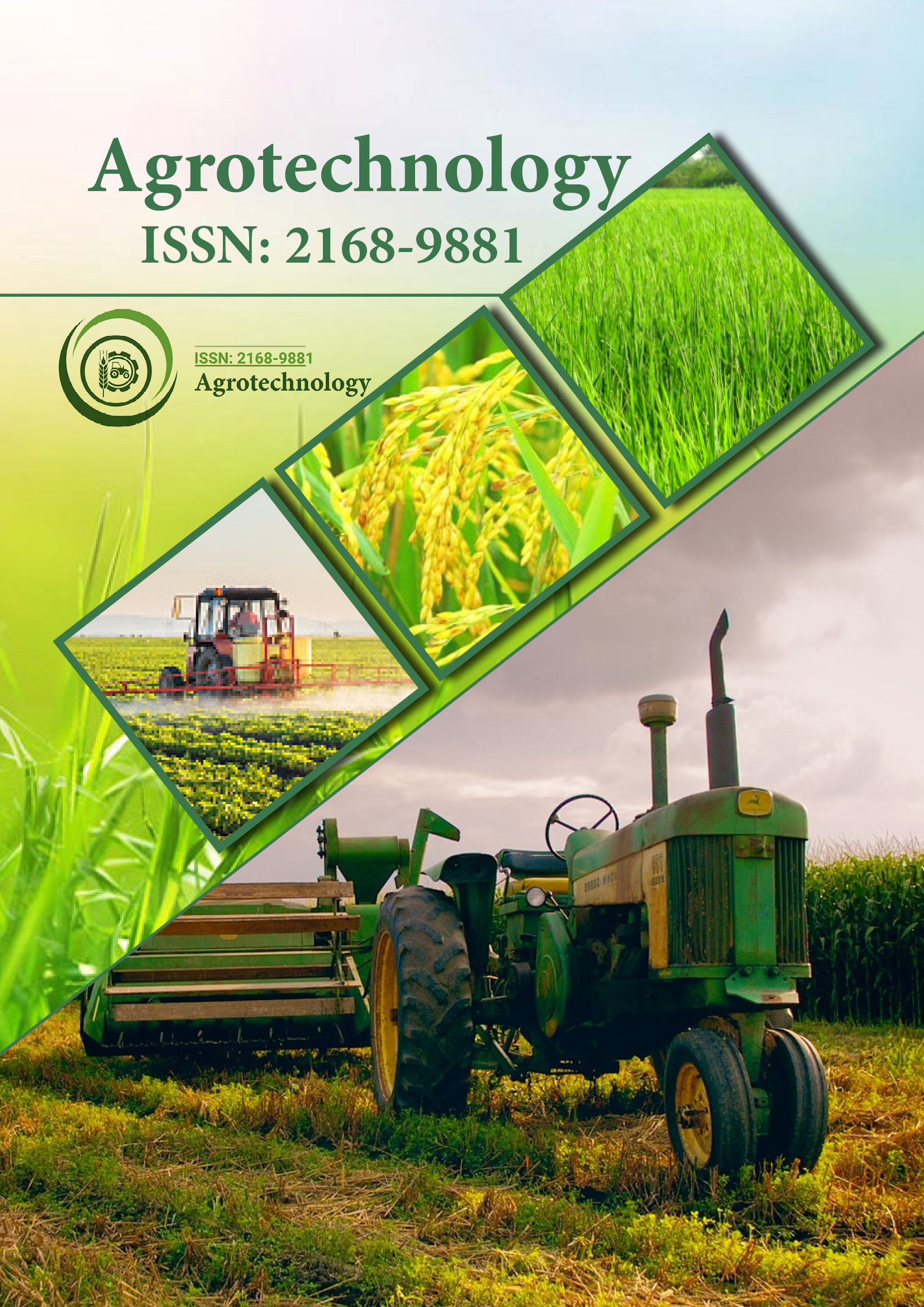インデックス付き
- Jゲートを開く
- Genamics JournalSeek
- アカデミックキー
- 研究聖書
- コスモスIF
- Global Online Research in Agriculture (AGORA) へのアクセス
- 電子ジャーナルライブラリ
- レフシーク
- 研究ジャーナル索引作成ディレクトリ (DRJI)
- ハムダード大学
- エブスコ アリゾナ州
- OCLC-WorldCat
- 学者の舵取り
- SWBオンラインカタログ
- 仮想生物学図書館 (vifabio)
- パブロン
- ジュネーブ医学教育研究財団
- ユーロパブ
- Google スカラー
このページをシェアする
ジャーナルチラシ

概要
雑草防除法が小麦の収穫量に与える影響
モハイミヌル・イスラム医師、マフザ・ベグム医師、アブドゥス・サラーム医師、アジズル・ラーマン医師
2017 年 11 月から 2018 年 3 月まで、バングラデシュ農業大学の農学フィールド研究室 (マイメンシン) で、雑草防除法が雑草と小麦 ( Triticum aestivum L. ) の収量に及ぼす影響を評価するための実験が行われました。実験は、ランダム化完全ブロック設計 (RCBD) で 4 回反復して実施されました。処理の組み合わせは合計 11 でした。処理は、T 0 = 除草なし、T 1 = 25 DAS での手作業による除草、T 2 = 40 DAS での手作業による除草、T 3 = 25 および 40 DAS での手作業による除草、T 4 = Panida 33EC、T 5 = Panida 33EC + 40 DAS での手作業による除草、T 6 = 出芽後除草剤としてのアフィニティ 50.75WP、T 7 = アフィニティ 50.75WP + 40 DAS での手作業による除草、T 8 = Panida 33EC + アフィニティ 50.75WP、T 9 = Panida 33EC + アフィニティ 50.75 + 40 DAS での手作業による除草でした。実験作物には、13科に属する合計18種の雑草が混入しており、そのうちイネ科から3種、ナス科、ツユクサ科、ヒユ科からそれぞれ2種、カヤツリグサ科、アカザ科、アブラナ科、セリ科、ヒルガオ科、タデ科、マメ科、ゴマノハグサ科、スベリヒユ科、一年草からそれぞれ1種が多年生植物より多かった。50 DASおよび収穫時における最も優占する5種の雑草の順位は異なっていた。イヌタデ、アカザ、カヤツリグサはすべてのサンプルで共通しており、収穫時には50 DASでニンジンやヒエの代わりにキノドン・ダクティロンやアマランサス・ビリディスが見つかっていた。収穫時には、 Digitaria sanguinalis、Commelina diffusa、Amaranthus viridis、Portulacea oleraceaが新たに現れました。雑草のない状態を除くすべての雑草防除処理の中で、T 9は雑草密度と乾燥重量が最も低く、除草されていない状態で最高値が見られました。作物の形質に関しては、T 9処理(Panida 33EC出芽前除草剤+アフィニティ50.75+40 DASでの手作業による除草)が、植物の高さ、総分げつ数-1 、有効分げつ数-1 、小穂数-1、充実した穀粒数-1、穀粒収量、茎葉収量がそれぞれ107、7.48、6.945、17.31、46.67、4.90、5.25で最高値を示しました。除草されていない状態では、最高の収量損失(51.30%)が観察され、最低値がT 9処理で見られました。雑草のない状態は作物生産にとって経済的ではない。経済分析の結果、最高のB:C比は処理T 9で確認された。 これは、この処理を適用することで農家がより多くの利益を得ることを意味します。したがって、実験から、Panida 33EC+affinity 50.75WP を適用し、40 DAS で手作業で除草することが、小麦品種 BARI gom-26 における最良の雑草防除方法であると結論付けることができます。
An experiment was conducted at the agronomy field laboratory of Bangladesh agricultural university, Mymensingh, from November 2017 to March 2018 to assess the effect of weed control methods on weeds and yield of wheat (Triticum aestivum L.). The experiment was laid out in a Randomized Complete Block Design (RCBD) with four replications. Total treatment combination was 11. The treatments were T0=unweeded, T1=hand weeding at 25 DAS, T2=hand weeding at 40 DAS, T3=hand weeding at 25 and 40 DAS, T4=Panida 33EC, T5=Panida 33EC+hand weeding at 40 DAS, T6=affinity 50.75WP as post emergence herbicide, T7=affinity 50.75WP+hand weeding at 40 DAS, T8=Panida 33EC+affinity 50.75WP, T9=Panida 33EC+affinity 50.75+hand weeding at 40 DAS. A total of 18 weed species belonging to 13 families infested the experimental crops of which three from Poaceae, two from each of the family Solanaceae, Commeliaceae, Amaranthaceae and one from each of the family Cyperaceae, Chenopodiaceae, Brassicaceae, Apiaceae, Convolvulaceae, Polygonaceae, Fabaceae, Scrophulriaceae, Portulaceae and annual outnumbered the perennial. The rank of order of five most dominant weed species at 50 DAS and harvest was different. Polygonum hydropiper, Chenopodium album, Cyperus rotundus are common in all sampling and at harvest Cynodon dactylon, Amaranthus viridis were found instead of Dacus carota and Echinochola colonum at 50 DAS. Digitaria sanguinalis, Commelina diffusa, Amaranthus viridis, Portulacea oleracea newly appeared at harvest. Among all the weed control treatments except weed free T9 produced lowest weed density and dry weight and highest value was found in unweeded condition. In regards of the crop characters T9 treatment (Panida 33EC pre emergence herbicide+affinity 50.75+hand weeding at 40 DAS) produced highest number of plant height, number of total tillers hill-1, number of effective tillers hill-1, number of spikelets spike-1, number filled grains spike-1, grain yield, stover yield 107, 7.48, 6.945, 17.31, 46.67, 4.90 and 5.25 respectively. In unweeded condition highest yield loss (51.30%) was observed and lowest one found at T9 treatment. Weed free condition is not economic for the crop production. After economic analysis the highest B: C ratio was found in treatment T9これは、この処理を適用することで農家がより多くの利益を得ることを意味します。したがって、実験から、Panida 33EC+affinity 50.75WP を適用し、40 DAS で手作業で除草することが、小麦品種 BARI gom-26 における最良の雑草防除方法であると結論付けることができます。